Since jazz’s beginnings, the measure of a musician’s talent has not only been how well the person improvises, but also how he or she interprets standards. In the 21st century a standard song has evolved past its Tin Pan Alley origins, plus distinctive purely jazz compositions have entered the canon. But while more conservative players treat standards as immutable, the CDs here are noteworthy because their creators distinctively re-imagine standards.
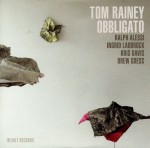 In an exercise that’s breathtakingly difficult, drummer Tom Rainey and his quintet take a collection of hyper-familiar tunes and upend them in such a way that it sounds as if they’re being played for the first time. Rainey, plus Canadian pianist Kris Davis, bassist Drew Gress, trumpeter Ralph Alessi and saxophonist Ingrid Laubrock, turn Obbligato (Intakt Records CD 227 intaktrec.ch) into a showcase for new ideas. Starting with the hoary Just in Time, the five cannily layer dissonant variations onto the basic theme before conjuring up the head. These restructurings take in songs by Duke Ellington, Dave Brubeck, Jerome Kern and Jule Styne among others. Secret Love, for example is given a sharpened, stop-time treatment, with an extended octave-jumping solo from Laubrock, decorated with smeared triplets from Alessi. Meanwhile whinnying brass and cymbal swishes back up steady vamping on You Don’t Know What Love Is until the pressurized torque explodes into the muted melody. With sophisticated timing, Davis shows her skills by plucking the recognizable melody of Reflections, while the saxophonist is constructing a related buoyant theme out of pinpointed smears and rests. Most extraordinarily, before the trumpeter creates a quivering impressionistic variant of Prelude to a Kiss, Rainey validates his percussion refinement, with one of his few solos. Putting in motion many parts of his kit, he moves the narrative forward without turning to bombast.
In an exercise that’s breathtakingly difficult, drummer Tom Rainey and his quintet take a collection of hyper-familiar tunes and upend them in such a way that it sounds as if they’re being played for the first time. Rainey, plus Canadian pianist Kris Davis, bassist Drew Gress, trumpeter Ralph Alessi and saxophonist Ingrid Laubrock, turn Obbligato (Intakt Records CD 227 intaktrec.ch) into a showcase for new ideas. Starting with the hoary Just in Time, the five cannily layer dissonant variations onto the basic theme before conjuring up the head. These restructurings take in songs by Duke Ellington, Dave Brubeck, Jerome Kern and Jule Styne among others. Secret Love, for example is given a sharpened, stop-time treatment, with an extended octave-jumping solo from Laubrock, decorated with smeared triplets from Alessi. Meanwhile whinnying brass and cymbal swishes back up steady vamping on You Don’t Know What Love Is until the pressurized torque explodes into the muted melody. With sophisticated timing, Davis shows her skills by plucking the recognizable melody of Reflections, while the saxophonist is constructing a related buoyant theme out of pinpointed smears and rests. Most extraordinarily, before the trumpeter creates a quivering impressionistic variant of Prelude to a Kiss, Rainey validates his percussion refinement, with one of his few solos. Putting in motion many parts of his kit, he moves the narrative forward without turning to bombast.
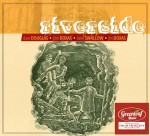 Another variation on this theme is interpreting another musician’s compositions while seamlessly adding your own themes in a similar style. That’s what American trumpeter Dave Douglas and Montreal reedist Chet Doxas do on Riverside (Greenleaf Music GLM 1036 greenleafmusic.com). A salute to the music of influential clarinetist Jimmy Giuffre, the quartet, filled out by electric bassist Steve Swallow and drummer Jim Doxas, Chet’s brother, performs tracks from this CD at The Rex on April 19. Although New Englander Douglas and Quebecer Doxas come from dissimilar backgrounds than Texas-born Giuffre, their originals reflect the same sort of Southwestern spaciousness in which the clarinetist’s trios specialized. Their sophisticated transformations are substantiated by slotting Douglas and Doxas tunes near Giuffre’s. Maintaining a loping swing throughout, the quartet also redefines a Giuffre standard like The Train and the River by carving out parts for drums and trumpet, unlike the original. Making the melody speedier and hard hitting doesn’t destroy its fragile beauty though. Cantering along via the drummer’s clip-clops and Swallow’s guitar-like plucks, Douglas’ Front Yard attains the same easy swing in which Giuffre specialized, harmonizing his muted trumpet and Doxas’ chalumeau clarinet. Doxas’ extended Sing on the Mountain/Northern Miner reflects his command of the moderato idiom as well, as contrapuntal trumpet tones and leisurely tenor sax slurs intertwine. Nonetheless, the quartet’s originality is confirmed with Douglas’ Backyard, a vamping blues line. While Douglas’ brassy tongue slurps and the drummer’s rapping backbeat create a tune much weightier than anything by Giuffre, its contrapuntal call-and-response organization maintains the mood.
Another variation on this theme is interpreting another musician’s compositions while seamlessly adding your own themes in a similar style. That’s what American trumpeter Dave Douglas and Montreal reedist Chet Doxas do on Riverside (Greenleaf Music GLM 1036 greenleafmusic.com). A salute to the music of influential clarinetist Jimmy Giuffre, the quartet, filled out by electric bassist Steve Swallow and drummer Jim Doxas, Chet’s brother, performs tracks from this CD at The Rex on April 19. Although New Englander Douglas and Quebecer Doxas come from dissimilar backgrounds than Texas-born Giuffre, their originals reflect the same sort of Southwestern spaciousness in which the clarinetist’s trios specialized. Their sophisticated transformations are substantiated by slotting Douglas and Doxas tunes near Giuffre’s. Maintaining a loping swing throughout, the quartet also redefines a Giuffre standard like The Train and the River by carving out parts for drums and trumpet, unlike the original. Making the melody speedier and hard hitting doesn’t destroy its fragile beauty though. Cantering along via the drummer’s clip-clops and Swallow’s guitar-like plucks, Douglas’ Front Yard attains the same easy swing in which Giuffre specialized, harmonizing his muted trumpet and Doxas’ chalumeau clarinet. Doxas’ extended Sing on the Mountain/Northern Miner reflects his command of the moderato idiom as well, as contrapuntal trumpet tones and leisurely tenor sax slurs intertwine. Nonetheless, the quartet’s originality is confirmed with Douglas’ Backyard, a vamping blues line. While Douglas’ brassy tongue slurps and the drummer’s rapping backbeat create a tune much weightier than anything by Giuffre, its contrapuntal call-and-response organization maintains the mood.
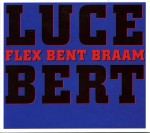 Formulating a variation of this concept is Dutch pianist Michiel Braam, whose arrangements for his Flex Bent Braam septet on Lucebert (BBBCD 16 michielbraam.com) re-energizes jazz and pop standards while linking them with eight originals based on epigrams by an innovative poet whose nom-de-plume was Lucebert. Don’t fear the highbrow trappings however; during the CD`s almost 80 minutes the pianist stitches together a sincerely jaunty program of his own shrewd compositions plus tunes by Thelonious Monk, Cole Porter and Dizzy Gillespie among others. Mocking and celebrating the standards in equal measure, the band finds unexpected echoes in many of the often-played themes. Get out of Town for instance could be the product of a small swing-era combo with slick piano glissandi and Joost Lijbaart’s drums swaying like a metronome. Straight No Chaser is set off with a treatment confirming its dance-like undercurrent via smacked cymbals and snorting work from altoist Bart van der Putten and baritonist Oleg Hollmann. The concept is enhanced when Braam’s compositions are examined alongside the standards. Gentle and ornamental with brassy expressiveness, his Drift-Urge is architecturally organized the same way as I May Be Wrong/So What? which follows it. Trombonist Wolter Wierbos’ slurs plus Angelo Verploegen’s whinnying trumpet create a distinctive overlay as the heaving reeds and pounding piano keys attach Braam’s initial melody to the familiar tune structures, while Tony Overwater’s bass playing confirms the rhythmic suture. Plunger trombone smears, high-pitched trumpet triplets and sharp alto sax bites are exciting in themselves during Zorg-Care; yet they remind the ear of Let’s Cool One which precedes it. All in all, swing plus significance is applied to every number.
Formulating a variation of this concept is Dutch pianist Michiel Braam, whose arrangements for his Flex Bent Braam septet on Lucebert (BBBCD 16 michielbraam.com) re-energizes jazz and pop standards while linking them with eight originals based on epigrams by an innovative poet whose nom-de-plume was Lucebert. Don’t fear the highbrow trappings however; during the CD`s almost 80 minutes the pianist stitches together a sincerely jaunty program of his own shrewd compositions plus tunes by Thelonious Monk, Cole Porter and Dizzy Gillespie among others. Mocking and celebrating the standards in equal measure, the band finds unexpected echoes in many of the often-played themes. Get out of Town for instance could be the product of a small swing-era combo with slick piano glissandi and Joost Lijbaart’s drums swaying like a metronome. Straight No Chaser is set off with a treatment confirming its dance-like undercurrent via smacked cymbals and snorting work from altoist Bart van der Putten and baritonist Oleg Hollmann. The concept is enhanced when Braam’s compositions are examined alongside the standards. Gentle and ornamental with brassy expressiveness, his Drift-Urge is architecturally organized the same way as I May Be Wrong/So What? which follows it. Trombonist Wolter Wierbos’ slurs plus Angelo Verploegen’s whinnying trumpet create a distinctive overlay as the heaving reeds and pounding piano keys attach Braam’s initial melody to the familiar tune structures, while Tony Overwater’s bass playing confirms the rhythmic suture. Plunger trombone smears, high-pitched trumpet triplets and sharp alto sax bites are exciting in themselves during Zorg-Care; yet they remind the ear of Let’s Cool One which precedes it. All in all, swing plus significance is applied to every number.
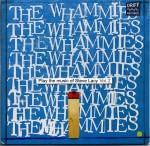 Another standards’ challenge crucially met on The Whammies: Play the Music of Steve Lacy Volume 2 (Driff Records CD 1303 driffrecords.com) is remaining individual during a complete program of one composer’s tunes. With soprano saxophonist Lacy, one of jazz’s idiosyncratic stylists whose his compositions are enduringly linked to his performances, The Whammies’ interpretations are simultaneously novel and deferential. It helps that alto saxophonist Jorrit Dijkstra studied with Lacy; drummer Han Bennink played with Lacy; and pianist Pandelis Karayorgis has an intuitive command of Monk’s work, which influenced Lacy’s writing. You can measure this by comparing how The Whammies handle Monk’s Shuffle Boil and Lacy’s Monk-dedication, Hanky-Panky. Balancing supple lyricism and whinnying trombone cries plus Karayorgis’ runs on the first, the band expresses source fealty. Whereas by emphasizing violinist Mary Oliver’s arpeggiated sweeps and trombonist Jeb Bishop’s low-pitched smears Hanky-Panky becomes the next step away from Monk’s music. A comparable neat trick turns up on Somebody Special which Lacy composed for Duke Ellington’s vocalist Ivie Anderson. As Bennink’s rolls and rim shots reference swing band rhythms, Oliver’s spiccato suggests both Anderson’s light-paced singing plus Ray Nance’s fiddle tricks with Ellington, while Bishop’s deep-dish slurs relate back to Tricky Sam Nanton. Not that every track is a mirror of a mirror of a mirror however. Feline becomes a near chamber music salute to Marilyn Monroe; while the wide-ranging polyphony and polyrhythms that characterize Threads, dedicated to Albert Einstein, connect some musical threads that include drum whumps, spidery piano licks and a contrapuntal showdown between Bishop’s plunger tone and the calliope-like squirms from Dijkstra’s lyricon. The lyricon’s moog-like tones plus bass string strops from Nate McBride and irregular piano key clips are just some of the contributions to the note pileup that is Lumps. Yet Bennink slaps and clatters his cymbals enough to maintain the tune’s absurdist nursery-rhyme pulse.
Another standards’ challenge crucially met on The Whammies: Play the Music of Steve Lacy Volume 2 (Driff Records CD 1303 driffrecords.com) is remaining individual during a complete program of one composer’s tunes. With soprano saxophonist Lacy, one of jazz’s idiosyncratic stylists whose his compositions are enduringly linked to his performances, The Whammies’ interpretations are simultaneously novel and deferential. It helps that alto saxophonist Jorrit Dijkstra studied with Lacy; drummer Han Bennink played with Lacy; and pianist Pandelis Karayorgis has an intuitive command of Monk’s work, which influenced Lacy’s writing. You can measure this by comparing how The Whammies handle Monk’s Shuffle Boil and Lacy’s Monk-dedication, Hanky-Panky. Balancing supple lyricism and whinnying trombone cries plus Karayorgis’ runs on the first, the band expresses source fealty. Whereas by emphasizing violinist Mary Oliver’s arpeggiated sweeps and trombonist Jeb Bishop’s low-pitched smears Hanky-Panky becomes the next step away from Monk’s music. A comparable neat trick turns up on Somebody Special which Lacy composed for Duke Ellington’s vocalist Ivie Anderson. As Bennink’s rolls and rim shots reference swing band rhythms, Oliver’s spiccato suggests both Anderson’s light-paced singing plus Ray Nance’s fiddle tricks with Ellington, while Bishop’s deep-dish slurs relate back to Tricky Sam Nanton. Not that every track is a mirror of a mirror of a mirror however. Feline becomes a near chamber music salute to Marilyn Monroe; while the wide-ranging polyphony and polyrhythms that characterize Threads, dedicated to Albert Einstein, connect some musical threads that include drum whumps, spidery piano licks and a contrapuntal showdown between Bishop’s plunger tone and the calliope-like squirms from Dijkstra’s lyricon. The lyricon’s moog-like tones plus bass string strops from Nate McBride and irregular piano key clips are just some of the contributions to the note pileup that is Lumps. Yet Bennink slaps and clatters his cymbals enough to maintain the tune’s absurdist nursery-rhyme pulse.
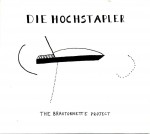 Setting out even more difficult sleights of hand is the French-German Die Hochstapler band, whose The Braxtornette Project (Umlaut Records ub004 umlautrecords.com) interprets compositions by Ornette Coleman and Anthony Braxton. To make this two-CD set more novel different groupings, most with trumpeter Louis Laurain, alto saxophonist Pierre Borel, bassist Antonio Borghini and drummer Hannes Lingens in common, mash up compositions by both men into extended medleys. The players’ skills are such that the commonality between Coleman’s blues-based lines and Braxton’s austere theses becomes obvious. With additional players making up a double quartet Die Hochstapler audaciously recalibrates Coleman’s Free Jazz composition as Part IV by bookending it with two variants on Braxton’s 348. Making the former tune more atonal and minimalist plus soothing what was originally played in a stentorian manner, tremolo jazziness is added to 348. More generic are Part II and Part III played only by the quartet. Stringing together an almost equal number of Braxton and Coleman tunes in each, the first medley emphasizes the music’s historical jazz motifs while the latter’s admixture plays out the compositional resemblances, mulching improvisation and atonality. Although the horns jump and judder throughout the ten tune-fragments that make up Part II, Lingens’ rugged drumming and Borghini’s sweeping thwacks regularize the underlying pulse to such an extent that staccato trumpet peeps and reed squeals indulge in satisfying vamps. Plus the bass and drum team shepherd the medley so that individual compositions’ tensile strength is apparent alongside the more obvious musical japes. Part III not only exposes a hitherto unknown eastern influence in Braxton lines such as 53 and 69D, but also moves the connected narrative through numerous variations. At times a theme is taken apart with horn peeps and bites; elsewhere unrelated shards are harmonized. Considering that Coleman tunes like Joy of a Toy, Deedee and W.R.U. are included, no matter how rapid or agitated the performance sounds, transitions include bonded swinging.
Setting out even more difficult sleights of hand is the French-German Die Hochstapler band, whose The Braxtornette Project (Umlaut Records ub004 umlautrecords.com) interprets compositions by Ornette Coleman and Anthony Braxton. To make this two-CD set more novel different groupings, most with trumpeter Louis Laurain, alto saxophonist Pierre Borel, bassist Antonio Borghini and drummer Hannes Lingens in common, mash up compositions by both men into extended medleys. The players’ skills are such that the commonality between Coleman’s blues-based lines and Braxton’s austere theses becomes obvious. With additional players making up a double quartet Die Hochstapler audaciously recalibrates Coleman’s Free Jazz composition as Part IV by bookending it with two variants on Braxton’s 348. Making the former tune more atonal and minimalist plus soothing what was originally played in a stentorian manner, tremolo jazziness is added to 348. More generic are Part II and Part III played only by the quartet. Stringing together an almost equal number of Braxton and Coleman tunes in each, the first medley emphasizes the music’s historical jazz motifs while the latter’s admixture plays out the compositional resemblances, mulching improvisation and atonality. Although the horns jump and judder throughout the ten tune-fragments that make up Part II, Lingens’ rugged drumming and Borghini’s sweeping thwacks regularize the underlying pulse to such an extent that staccato trumpet peeps and reed squeals indulge in satisfying vamps. Plus the bass and drum team shepherd the medley so that individual compositions’ tensile strength is apparent alongside the more obvious musical japes. Part III not only exposes a hitherto unknown eastern influence in Braxton lines such as 53 and 69D, but also moves the connected narrative through numerous variations. At times a theme is taken apart with horn peeps and bites; elsewhere unrelated shards are harmonized. Considering that Coleman tunes like Joy of a Toy, Deedee and W.R.U. are included, no matter how rapid or agitated the performance sounds, transitions include bonded swinging.
Standards are defined that way because of their universality. Yet these bands demonstrate how familiarity can be excitedly mixed with new interpretations.



